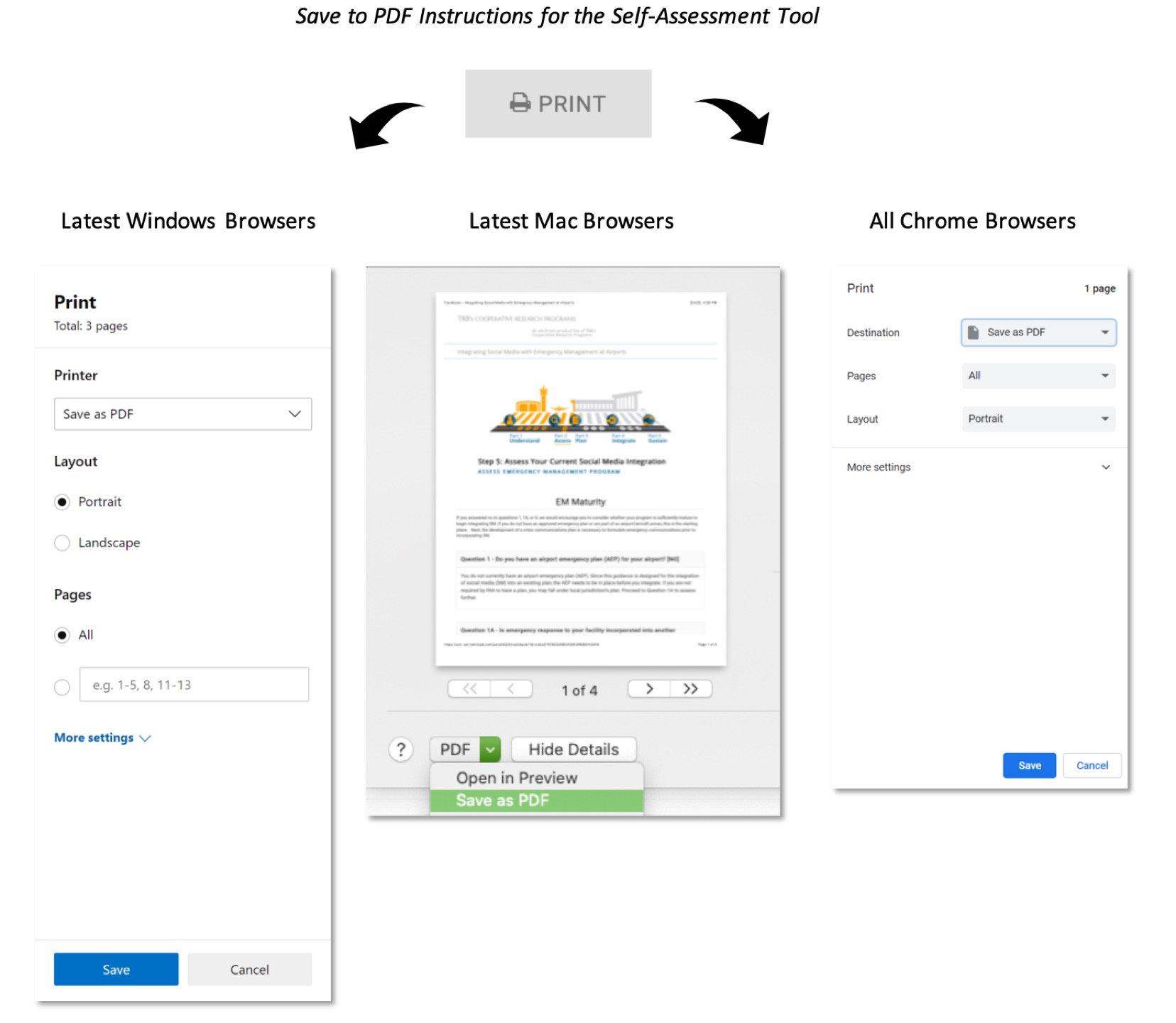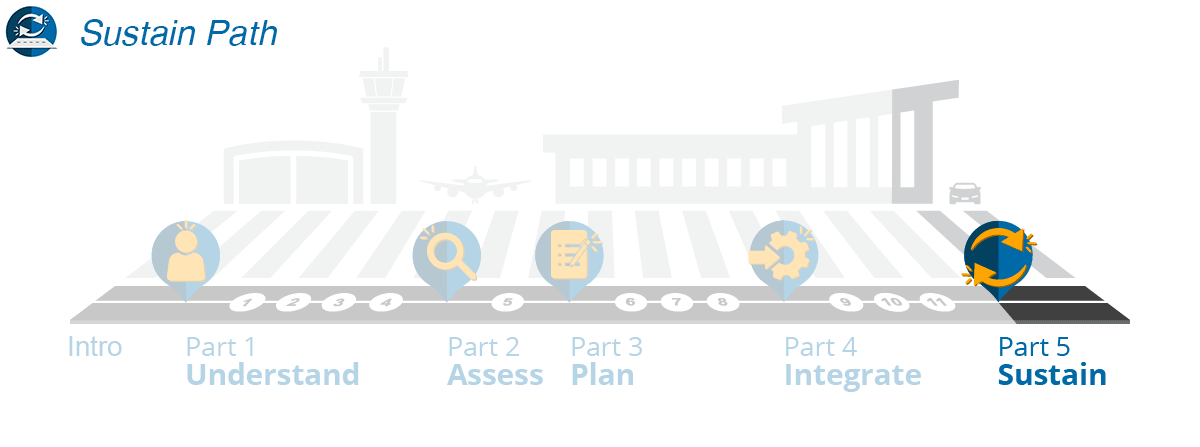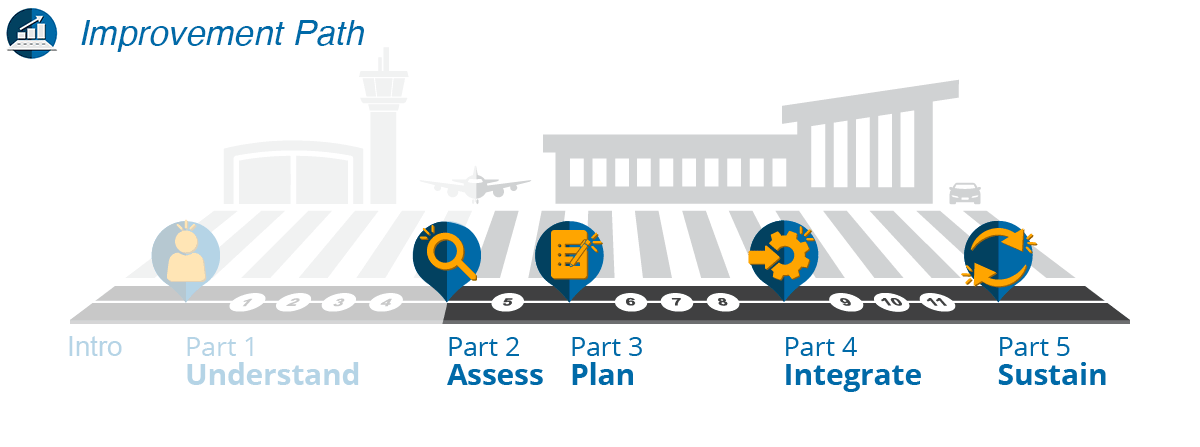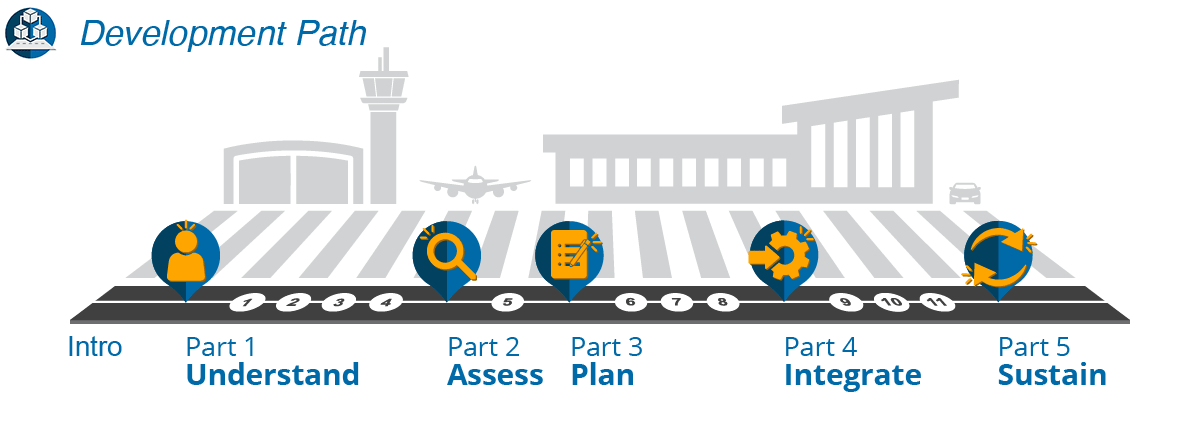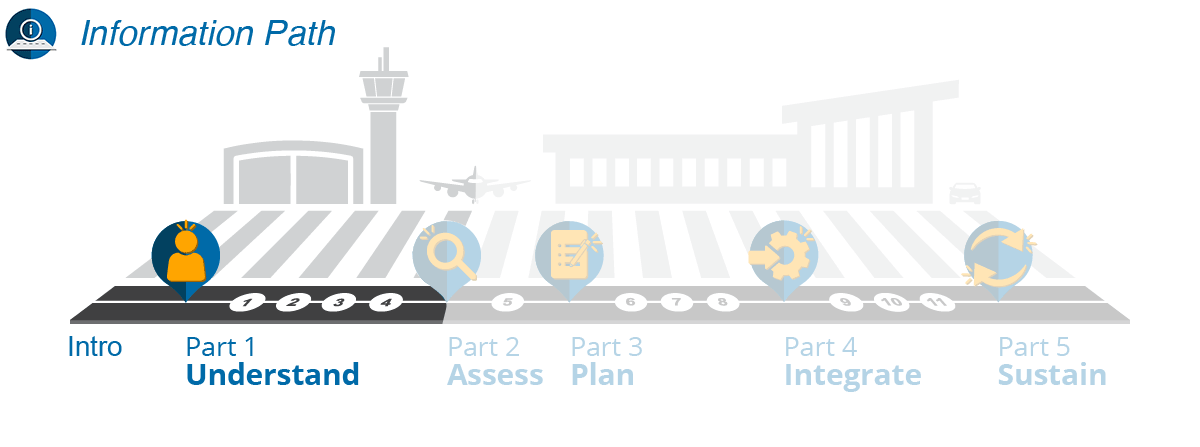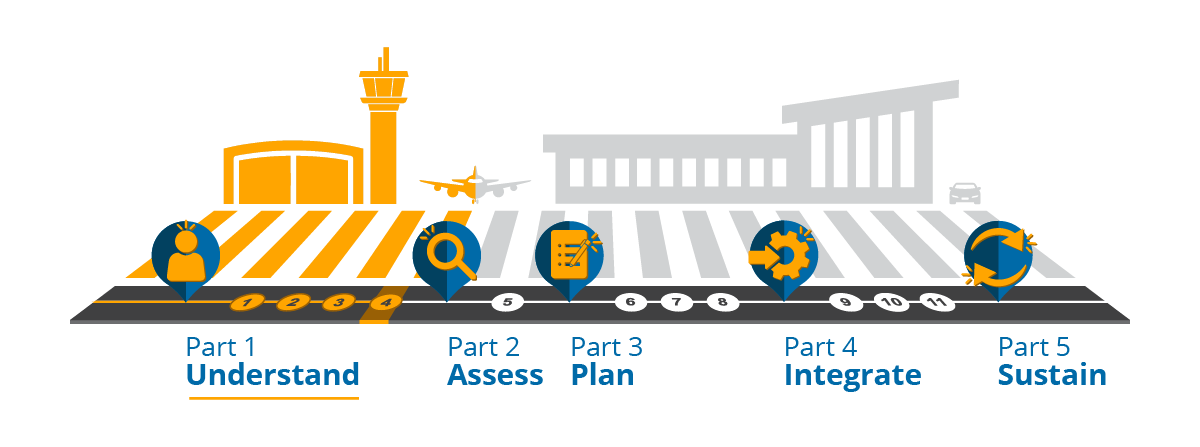
Step 4: Understand the Challenges of Using Social Media in Emergency Management
Change
There are certain administrative, organizational, and cultural aspects that affect development of an SMEM program. This is especially relevant to consider if you are a small or medium-sized airport with limited resources or an airport that does not already actively use SM. These aspects include the following:
- Overcoming organizational barriers
- Personnel limitations (experience, agility, and availability)
- Cost of training
Overcoming Organizational Barriers
When implementing an SMEM program, you should consider the challenges you most likely face through various organizational barriers. These include leadership, organizational structure, and the overall airport culture. Airport leadership can be overly cautious in sharing information and may limit the program’s effectiveness. For example, some airport organizations require multiple levels of approval from within the organization before a message can be shared. Although the message may be more thoroughly vetted, the information may no longer be timely.
These issues are further complicated when you must work with multiple stakeholders to craft a unified message for an event. Developing agreements and policies with your stakeholder team helps provide the structure that is needed and gives your stakeholder team boundaries to aid in building trust, overcoming organizational barriers, and providing timely messaging. See Step 9: Establish Your Integration Needs for more information on developing these agreements and defining roles and responsibilities.
Personnel Limitations (Experience, Agility, and Availability)
Another challenge to building an SMEM program is identifying airport staff who are experienced in managing SM channels. Further, even with existing experience, oftentimes additional training and skillsets are needed for sustaining the program. Key challenges include lack of staff agility and availability and the cost of training. It is important to assess your capabilities in this area to determine whether you are ready for SMEM or whether your SM program requires further development prior to integration with EM.
Since the SM resource level for many airport operators is very low, managing SM activities during an incident can quickly overwhelm internal resources. However, there is a range of options for airport operators to consider in order to maintain varying degrees of control over SM messaging during emergency events. For instance, an airport operator with limited staffing could look at support for SM listening from mutual aid partners who are SM-savvy or from hired outside vendors. If that is you, consider establishing a virtual operating support team (VOST). A VOST is an off-site team of trusted sources that can support SM efforts.
Cost of Training
Training for new tasks associated with SM will include integrated training that can incorporate SM at the basic level for those who need it, as well as throughout all Incident Command System (ICS) training components so that SM is not just an isolated tool. The time and money required to prepare and conduct this training can present unexpected challenges. To help mitigate this, you can consider combining SM training with other training or using on-the-job-training.
